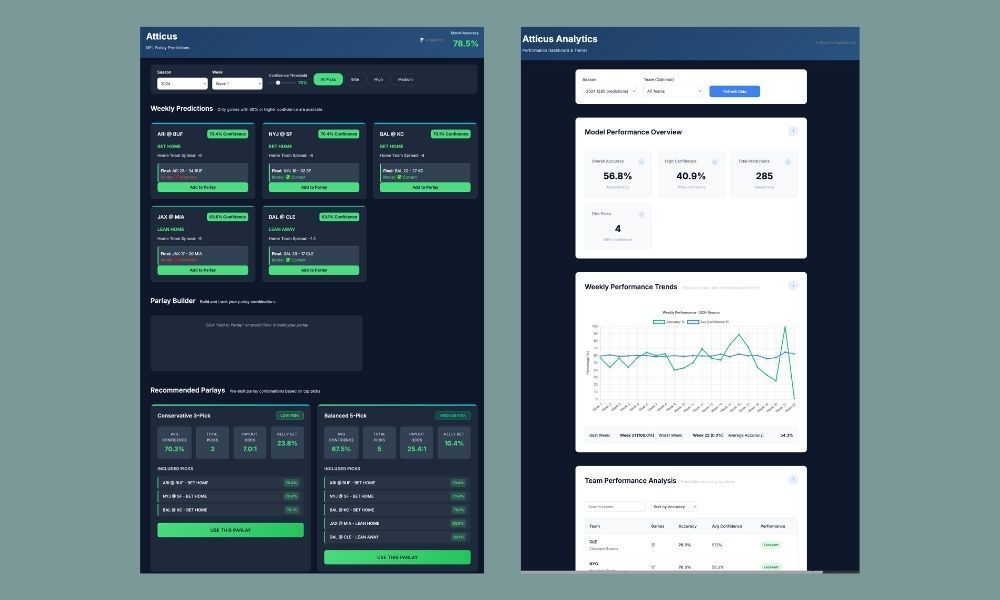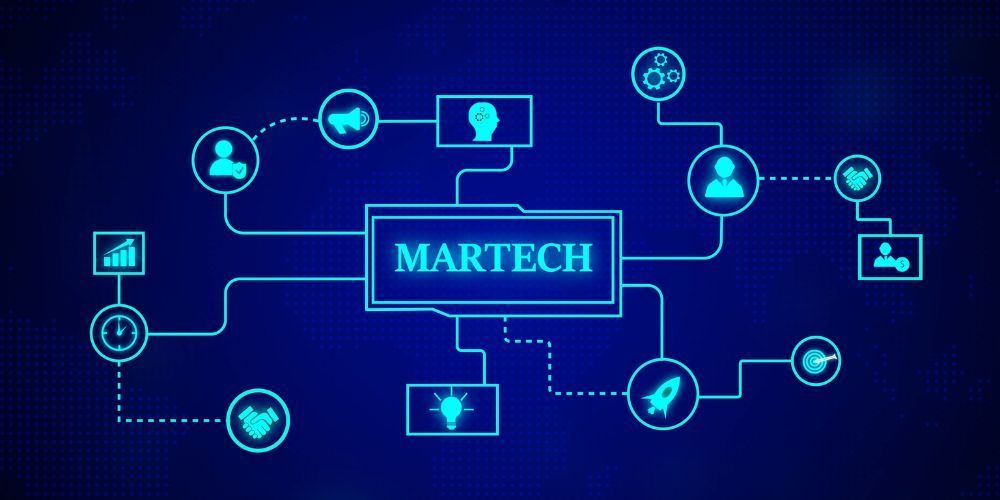AI-Enhanced Forecasting: Moving from Static to Predictive CX
The Death of "Set It and Forget It" Customer Experiences
Customer experience teams are drowning in their own success. The marketing automation platforms that once revolutionized how we engage customers have become rigid, rule-based systems that can't keep pace with modern buyer behavior.
I witnessed this firsthand while consolidating over 900 websites at Novartis across 90 countries. Our legacy systems were built on static assumptions: if a healthcare professional visits page X, send email Y after Z days. But healthcare professionals don't behave predictably. They research in bursts, consume content across multiple channels, and make decisions based on patient needs that change daily.
Static forecasting assumes tomorrow looks like yesterday. Predictive AI knows better.

Why Static CX Models Are Failing
Traditional customer experience strategies operate like weather forecasters using last year's data. They segment customers into fixed categories, trigger campaigns based on predetermined rules, and measure success against historical benchmarks.
This approach breaks down when customer behavior shifts rapidly—which it has, permanently.
Consider how B2B buyers have changed since 2020. According to Gartner, the typical buying group now includes six to ten decision-makers. These stakeholders interact with your brand asynchronously, consuming content at different times, through different channels, with different priorities.
Your static nurture campaign can't account for this complexity. It sends the same sequence to a CFO as it does to a technical evaluator, despite their vastly different information needs and decision timelines.
Key Problems with Static Models
- Segment customers based on past behavior, not future likelihood
- React to customer actions instead of anticipating them
- Optimize for average performance, missing individual opportunities
- Require manual updates as market conditions change
The Predictive Advantage: How AI Changes Everything
Predictive AI transforms customer experience from reactive to anticipatory. Instead of waiting for customers to signal intent, AI models identify patterns that predict future behavior, allowing you to engage customers before they even know they're ready.
At one consumer reviews platform I worked with, we implemented predictive scoring that increased organic traffic revenue by 28% in eight months. The system didn't just track which content users consumed—it predicted which content they would need next based on similar user journeys.
Here's how predictive CX fundamentally differs:
Pattern Recognition at Scale
AI analyzes thousands of customer touchpoints simultaneously, identifying behavioral patterns that humans miss. It recognizes that B2B prospects who download pricing guides on Tuesday afternoons are 3.2x more likely to request demos within 14 days than those who download on Friday mornings.
Dynamic Segmentation
Instead of static personas, AI creates fluid customer segments that update in real-time. A customer might be in your "evaluation" segment on Monday and your "expansion" segment by Thursday, based on their engagement patterns and similar customer progressions.
Predictive Content Delivery
AI doesn't just personalize content—it predicts which content will drive desired outcomes. It might surface a case study about ROI measurement to a prospect showing early buying signals, even if they haven't explicitly requested financial information.
Building Your Predictive CX Architecture
Transforming from static to predictive CX requires both strategic restructuring and technical implementation. You can't simply add AI to existing processes—you need to rebuild your approach around predictive insights.
Phase 1: Data Foundation and Infrastructure
Unify Your Data Sources
Predictive AI needs comprehensive customer data to identify meaningful patterns. This means connecting your CRM, marketing automation platform, website analytics, support tickets, and any other customer touchpoints into a unified view.
Start with your highest-quality data sources. At Novartis, we began with website behavior and email engagement before incorporating regional compliance data and medical content consumption patterns.
Implement Real-Time Data Collection
Static systems can tolerate data delays. Predictive systems cannot. If your lead scoring updates once daily, you're missing opportunities to engage prospects when they're most receptive.
Technical requirements include:
- Event streaming platforms (like Kafka or Kinesis) for real-time data processing
- Customer data platforms (CDPs) that create unified customer profiles
- API-first architecture that allows rapid integration of new data sources
Establish Data Quality Standards
AI amplifies both good data and bad data. Clean, consistent data produces accurate predictions. Inconsistent data produces expensive mistakes.
Implement systematic data cleansing that removes duplicates, standardizes formats, and enriches missing attributes. Most organizations underestimate this step—and pay for it later when their AI models make recommendations based on flawed data.
Phase 2: Predictive Model Development
Start with High-Impact Use Cases
Don't try to predict everything at once. Identify customer experience challenges where better forecasting would have immediate business impact.
Common high-value applications include:
- Churn prediction: Identify customers likely to cancel before they show obvious warning signs
- Expansion opportunity scoring: Predict which existing customers are ready for upselling
- Content recommendation: Deliver the right content at the optimal time in the customer journey
- Support escalation prevention: Identify customers likely to need help before they submit tickets
Choose the Right AI Approach
Different predictive challenges require different AI techniques. Customer lifetime value prediction might use regression models, while next-best-action recommendations often require machine learning algorithms like collaborative filtering or deep learning.
Work with data scientists who understand both the technical capabilities and business constraints. The most sophisticated model is worthless if your team can't implement its recommendations quickly.
Build Feedback Loops
Static systems run until someone manually updates them. Predictive systems must continuously learn and improve. Build mechanisms that feed customer outcomes back into your models so they become more accurate over time.
Phase 3: Organizational Transformation
Restructure Around Customer Outcomes
Predictive CX requires organizational changes beyond technology. Traditional marketing teams optimize campaigns in isolation. Predictive CX teams optimize entire customer journeys.
This often means breaking down silos between marketing, sales, and customer success. Create cross-functional teams responsible for specific customer outcomes, not just channel performance.
Develop AI-Fluent Capabilities
Your team doesn't need to become data scientists, but they need to understand how AI generates recommendations and when to trust those recommendations.
Invest in training that covers:
- How to interpret predictive scores and confidence intervals
- When AI recommendations align with business goals
- How to provide feedback that improves model performance
- Understanding the limitations and potential biases of AI systems
Create Rapid Testing Infrastructure
Predictive insights are only valuable if you can act on them quickly. Build processes that allow you to test AI-generated hypotheses within days, not months.
This might mean automated A/B testing platforms, streamlined content creation workflows, or simplified campaign deployment processes.
Real-World Implementation: B2B vs. B2C Considerations
The strategic approach to predictive CX remains consistent across B2B and B2C contexts, but implementation details differ significantly.
B2B Predictive CX
B2B customer journeys are longer, involve multiple stakeholders, and require different types of predictions. Focus on account-level insights rather than individual behavior.
Account Progression Modeling
Predict which accounts are advancing through your sales process based on engagement patterns across all stakeholders. This might involve tracking how many people from an organization engage with your content, which roles are represented, and how their engagement patterns compare to successful deals.
Stakeholder Influence Scoring
Not all decision-makers have equal influence. AI can identify which stakeholders within an account have the strongest correlation with purchase decisions, allowing you to prioritize your engagement efforts.
Implementation Timing
B2B implementations often require longer development cycles due to compliance requirements, integration complexity, and stakeholder alignment. Plan for 6-12 month implementations that include extensive testing with your sales team.
B2C Predictive CX
B2C implementations can often move faster but require handling much larger data volumes and more diverse customer behaviors.
Micro-Moment Optimization
B2C customers make decisions quickly. Your predictive models need to identify and respond to micro-moments when customers are most likely to convert, often within minutes or hours.
Seasonal and Trend Adaptation
B2C buying patterns change rapidly due to trends, seasons, and external events. Your AI models must adapt quickly to shifting consumer preferences without losing accuracy.
Privacy-First Implementation
B2C predictive CX must balance personalization with privacy concerns. Implement techniques like differential privacy and federated learning that provide predictive insights without compromising customer data.
Measuring Success: Beyond Traditional Metrics
Predictive CX requires new measurement approaches. Traditional metrics like click-through rates and conversion rates tell you what happened. Predictive metrics tell you what's likely to happen—and whether your interventions are working.
Predictive Accuracy Metrics
Track how often your AI models correctly predict customer behavior. This includes both precision (when the model predicts an event, how often does it occur?) and recall (what percentage of actual events does the model catch?).
Time-to-Insight Reduction
Measure how quickly you can identify and respond to changing customer behavior. The value of predicting that a customer will churn decreases rapidly if you can't intervene before they cancel.
Proactive Engagement Success
Track outcomes from AI-initiated interactions. How often do predictive recommendations lead to positive customer outcomes compared to reactive responses?
Model Drift Detection
Customer behavior changes over time, which can reduce model accuracy. Monitor for model drift and measure how quickly you can retrain models to maintain predictive performance.
Common Implementation Pitfalls and How to Avoid Them
After working with dozens of organizations on digital transformation, I've seen predictable patterns in both successful implementations and spectacular failures.
Pitfall 1: Technology-First Approach Organizations often start with AI tools instead of business problems. They implement sophisticated machine learning platforms without clear use cases, then struggle to generate value.
Solution: Start with specific customer experience challenges that predictive insights could solve. Choose technology that fits your problems, not the other way around.
Pitfall 2: Perfectionism Paralysis Teams spend months trying to build perfect predictive models instead of implementing good-enough models that can improve over time.
Solution: Launch with simple predictive capabilities that deliver immediate value, then iterate toward more sophisticated approaches.
Pitfall 3: Ignoring Change Management Technical implementation succeeds, but teams continue using old processes because they don't trust AI recommendations or don't understand how to act on them.
Solution: Invest equally in technology and organizational change. Train teams on interpreting AI insights and create clear processes for acting on predictive recommendations.
The Future of Predictive Customer Experience
We're moving toward a world where customer experience becomes increasingly anticipatory. AI will predict not just what customers will do, but what they'll need, when they'll need it, and how they prefer to receive it.
The organizations that master this transition will create sustainable competitive advantages. They'll identify opportunities before competitors, prevent problems before customers notice them, and deliver experiences that feel almost magical in their relevance and timing.
But this future requires more than just implementing AI tools. It demands fundamental changes in how organizations think about customer relationships, data utilization, and cross-functional collaboration.
The transformation from static to predictive CX isn't just a technical upgrade—it's a strategic imperative. Customer expectations will continue rising. Competitive pressures will continue intensifying. The organizations that can anticipate and respond to these changes will thrive.
The question isn't whether to make this transition. It's how quickly you can implement predictive capabilities that drive measurable business outcomes.
Key Takeaways:
- Static CX models react to customer behavior; predictive models anticipate it
- Successful implementation requires both technical infrastructure and organizational change
- Start with high-impact use cases rather than trying to predict everything
- B2B and B2C implementations have different requirements but follow similar strategic principles
- Measure predictive accuracy and time-to-insight, not just traditional engagement metrics
What's your next step? Begin with a data audit to understand your current capability to support predictive insights. Then identify one high-impact use case where better forecasting could drive immediate business value.
How can we prepare our customer data for AI implementation regardless of which platform we use?
Data preparation is the foundation of successful predictive CX. Start with a comprehensive data audit to assess completeness, accuracy, and consistency across all customer touchpoints. Establish clear data governance standards with assigned responsibilities for data quality. Implement systematic cleansing to remove duplicates and standardize formats. Create unified customer identifiers that connect data across platforms. Document data lineage to understand how information flows through your systems. Most importantly, treat data preparation as an ongoing discipline, not a one-time project. Organizations that excel with predictive AI maintain continuous data quality processes.
What skills should we be developing in our marketing and sales teams for predictive CX?
Teams need a blend of analytical, technical, and strategic capabilities. Develop basic data literacy and understanding of how AI generates recommendations. Train teams to interpret predictive scores and confidence intervals critically. Build skills in hypothesis development and testing to validate AI insights. Foster cross-channel thinking that optimizes entire customer journeys rather than individual touchpoints. Most importantly, cultivate adaptability—the tools will continue evolving, but the goal of understanding and serving customers remains constant. Consider creating cross-functional teams that combine technical and business expertise to maximize the value of predictive insights.
Should our company abandon our current CRM and marketing automation investments?
Not necessarily. Evaluate your current systems' utilization, data quality, and integration capabilities before making major changes. Many organizations find success with a hybrid approach that supplements existing platforms with AI-powered insights and automation. Focus on connecting your current tools to create unified customer views rather than replacing everything immediately. However, if your systems can't support real-time data processing, API integrations, or unified customer profiles, you may need to consider more significant changes. The key is ensuring your technology stack can support predictive capabilities, whether through enhancement or replacement.
Author: William Flaiz















